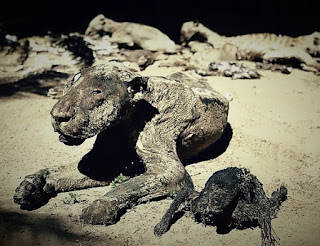Body Worlds: Amsterdam - The Happiness Project

I've recently had a break from writing posts as I was busy working and travelling. However, as I have a bit of time this evening, I wanted to share my experience from the amazing attraction, which I had an opportunity to attend during my visit to Amsterdam, Holland, where I went last month. The Body Worlds is well known to be a rather controversial set of exhibitions containing real dissected bodies of humans (coming from willing donors) and animals, preserved via a method known as plastination. The technique was developed by the founder of the Body Worlds, Gunther Von Hagens, in order to conserve specimens, so that they do not smell or decay. It is done by replacing the fat and water within the bodies with plastics. From experience, I can say that the method works amazingly well as during my time at the exhibition I could not smell anything bad, only a slight smell of plastic. Labelled plastinate of a human heart. While it is common for other people (such as my poor mot...







